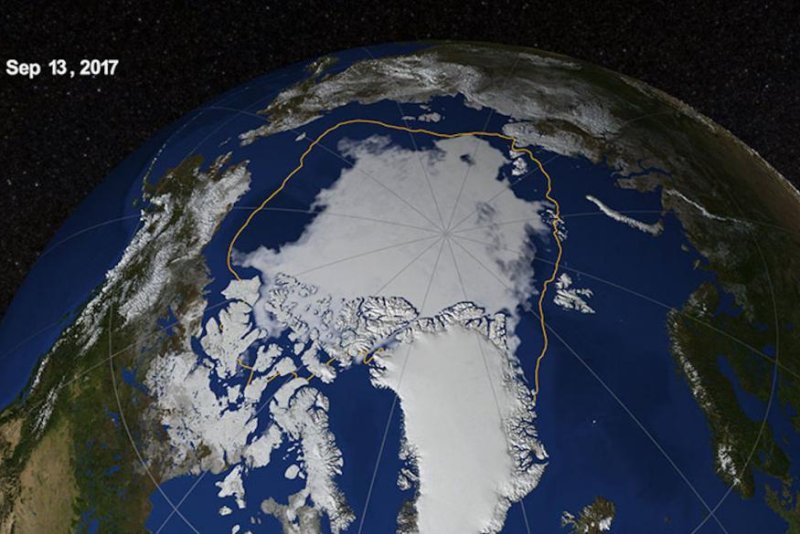New modeling analysis suggests natural climate variability has contributed to Arctic sea ice loss over the last several decades. Photo by NASA
Nov. 6 (UPI) -- Manmade climate change alone doesn't explain the dramatic loss of sea ice in the Arctic. According to new analysis by scientists at Lawrence Livermore National Laboratory, natural climate variability has accelerated Arctic sea ice loss over the last several decades.
Researchers used a variety of climate models and an analytical method known as "fingerprinting" to determine which factors best explain changes in Arctic sea ice.
The new analysis -- detailed this week in the journal Nature Geoscience -- suggests natural climate fluctuations, including El Niños and La Niñas patterns, account for 40 to 50 percent of sea ice loss in the Arctic.
"Internal variability can enhance or mute changes in climate due to greenhouse gas emissions. In this case, internal variability has tended to enhance Arctic sea ice loss," said Stephen Po-Chedley, an LLNL climate scientist, said in a news release.
Most climate models predict less sea ice loss than has been observed in recent years. The latest analysis suggests natural atmospheric patterns help explain the accelerated melting.
"It is important to note that individual runs do show large changes in sea ice that are comparable to observed sea ice changes," Po-Chedley said. "In these simulations, like in the real world, Arctic sea ice loss was enhanced by natural climate variability. When natural variability is taken into account, Arctic sea ice loss is quite similar across models and observations."
Over the last decade, Arctic sea ice maximum and minimum extents have routinely set new record lows. The latest research suggests those losses are the result of both human-caused global warming and natural climate variability.
But natural atmospheric patterns can also be influenced by greenhouse gas emissions. Previous research has shown increases in climate change-caused marine heat waves can encourage prolonged El Niño patterns.
"Climate change is influencing the traditional dynamics of El Niño and La Niña events as well as their impacts," WMO Secretary-General Petteri Taalas said in a statement earlier this year.















